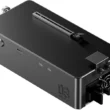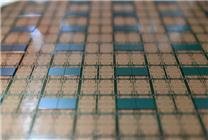Cambrian’s Remarkable Turnaround: From Loss to Profit in the AI Chip Industry
Cambrian, often dubbed the Chinese equivalent of Nvidia, has made headlines with a stunning turnaround that highlights the burgeoning market for domestic AI chips. In just six months, the company has transformed its fortunes from an annual loss of approximately 530 million yuan to achieving a net profit of 1.038 billion yuan in the first half of 2025.
Significant Performance Gains
According to Cambrian’s latest semi-annual performance report, the company recorded impressive operating income of about 2.881 billion yuan, marking a staggering year-on-year increase of 4347.82%. This substantial growth reflects the surging demand for artificial intelligence computing power, driven by cutting-edge technologies and advancements in AI applications.
The leap from losses to profits signals a pivotal moment for Cambrian, particularly as it competes in an increasingly crowded market. Its basic earnings per share reached 2.5 yuan, showcasing its potential to attract investor interest.
Driving Factors Behind the Growth
Cambrian attributes its remarkable performance to several key factors. The persistent demand for AI-driven computing capabilities plays a crucial role in the company’s recovery. As one of the primary players in the domestic AI chip arena, Cambrian has deepened its technical partnerships with leading firms in high-tech sectors, particularly in large models and AI applications.
The company’s commitment to innovation and adaptability has allowed it to effectively collaborate with industry giants. This open cooperative mindset accelerates the application of AI technologies and expands market presence, resulting in exponential growth in revenue.
Industry Trends and Domestic Competition
Cambrian’s impressive resurgence underscores significant changes within the AI chip industry. As the demand for domestic AI solutions continues to rise, Cambrian’s success illustrates a broader trend towards prioritizing self-sufficiency in technology. The implications of such a shift are vast; the growing reliance on domestic alternatives signifies a more competitive landscape where companies like Cambrian are no longer lagging behind more established players, including Nvidia.
This development is especially pronounced given the recent controversies surrounding Nvidia’s H20, which have further fueled interest in domestic AI chip solutions. Cambrian’s robust performance demonstrates that domestic AI chips can hold their own against international competitors, showcasing their technological capabilities and market viability.
Looking Forward
As Cambrian continues to navigate the evolving AI landscape, the company is well-positioned to capitalize on emerging opportunities within the sector. The ongoing technological advancements and increased investments in AI infrastructure will likely sustain the demand for AI chips in the coming years.
Moreover, with a strong emphasis on research and development, Cambrian aims to refine its products continuously, ensuring they meet the dynamic needs of various applications. By fostering innovation and strategic partnerships, Cambrian is not just aiming for market penetration but also leadership within the industry.
Conclusion
Cambrian’s transformation from substantial loss to a remarkable profit in a mere six months is a testament to the accelerating demand for AI chip technology. The company’s ability to adapt and innovate, coupled with strategic collaborations, has established it as a formidable player in the domestic market. As the industry evolves, Cambrian’s future appears promising, and its success highlights the critical importance of domestic AI solutions in a competitive global landscape.
For investors and industry stakeholders, Cambrian’s journey serves as an insightful case study into the potential of domestic technology firms to innovate and thrive amidst challenges. The growing trend towards independent technology solutions underlines the necessity for continued investment and development in the AI sector.







